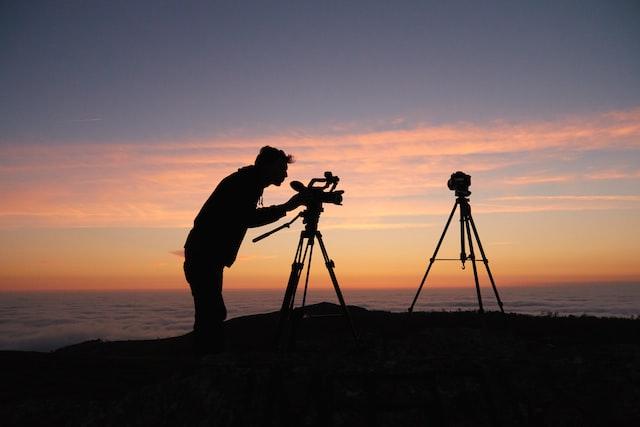When is a Tripod Needed in Photography
In photography, a tripod is a three-legged support used to stabilize the camera and reduce camera shake. While tripods can be helpful in a variety of situations, they are not always necessary.
In this article, we will explore the question ‘when is a tripod needed in photography’ and the benefits of using one. Whether you are a beginner or a seasoned photographer, understanding when and how to use a tripod can help you capture sharp, blur-free photos and expand your creative options.
So read on to learn more about the role of tripods in photography and how they can help you take your photography to the next level.
Table of Contents

Answering the Question 'When is a Tripod Needed in Photography?'
A tripod is typically needed in photography when you want to take a photo with a slow shutter speed or a long exposure time. Using a tripod helps to keep the camera steady and reduces camera shake, which can cause blurriness in the final photograph.
There are also other situations in which a tripod can be helpful, such as when you want to take a self portrait or group photo and don’t have someone to hold the camera, or when you want to take photos from a low angle or a high angle and need to adjust the camera’s position.
Overall, a tripod can be a useful tool for photographers who want to capture sharp, blur-free photos, especially in situations where the camera needs to be kept still for an extended period of time.
When is a Tripod Needed: 7 Key Examples
When taking long exposure photographs: A tripod is essential for keeping the camera steady when taking long exposure photographs, which are typically defined as exposures that are longer than about 1/30th of a second. Long exposures can be used to capture a variety of effects, such as smooth water, moving clouds, and light trails.
When using a slow shutter speed: Even if you’re not taking a long exposure photograph, a tripod can still be helpful when using a slow shutter speed. A slow shutter speed can be used to create a sense of motion blur or to capture low light scenes, but it can also lead to camera shake if the camera is not held steady.
When shooting at night: Photographing at night often requires the use of a slow shutter speed, so a tripod is typically needed to keep the camera steady and avoid camera shake.
When shooting with a telephoto lens: Telephoto lenses have a narrow field of view and can magnify any camera movement, making it more difficult to handhold the camera steady. Using a tripod can help to reduce camera shake and ensure that your photos are sharp.
When shooting with a large aperture: A large aperture (e.g. f/2.8 or wider) can create a shallow depth of field in your photos, which can make it harder to keep everything in focus. Using a tripod can help to ensure that your camera is perfectly still when taking the photo, which can help to keep everything in focus.
When shooting with a heavy camera or lens: If you are using a heavy camera or lens, it can be difficult to hold the camera steady for an extended period of time. Using a tripod can help to take the strain off your arms and allow you to take photos more comfortably.
When shooting with a macro lens: Macro lenses are designed for close-up photography and have a very shallow depth of field. Using a tripod can help to keep the camera steady and ensure that your photos are sharp, especially when shooting at very small apertures.
When is a Tripod Needed: Final Thoughts
Tripods are a valuable tool for photographers who want to capture sharp, blur-free photos. They are particularly useful in situations where the camera needs to be kept still for an extended period of time, such as when taking long exposures or using a slow shutter speed.
Tripods can also be helpful when shooting at night, with a telephoto lens, with a large aperture, with a heavy camera or lens, or with a macro lens.
While tripods are not always necessary, they can be a useful addition to any photographer’s kit, especially if you want to expand your creative options and take your photography to the next level.

